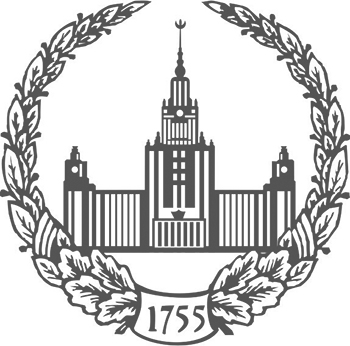ISSN: 2074-8132

ISSN: 2074-8132

Introduction. The article presents the preliminary results of the anthropological expedition to Barnaul, Altai Krai (Siberian Federal District), conducted in September 2023 in order to study long-term (over the past 70 years) changes in body sizes among modern youth in this region. One of the main practical tasks of the study was the development of relevant standards (reference tables) for assessing the level of physical development of students in Altai Krai.
Materials and methods. The study group consisted of 295 young men and women aged 17–23, mainly (more than 92%) Russians by nationality. Subjects were examined according to a comprehensive anthropometric program including measurement of total body sizes, shoulder and pelvic breadths, trunk and limb circumferences, five skinfolds, and grip strength on right hand.
Results. The average height of young males born in Barnaul increased by 10,5 cm across birth cohorts from the 1930s to the 2000-2006s. The rate of secular increase in height is about 1,5 cm per decade. Intergroup comparisons of body height in female samples from Barnaul demonstrated an increase in height in modern women by 5 cm compared with the cohorts born in the 1940s (about 0,8 cm per decade). Long-term changes in anthropometric parameters in Barnaul are comparable with the general secular trend in Russia and consistent with the hypothesis of the dominant influence of socio-economic factors on intergenerational transformation of the physique of children, adolescents, and young adults.
Conclusion. Growth standards (reference tables) have been developed based on the results of the regression analysis between weight and height, to assess the indicators of physical development of students in Altai Krai. The reference tables provide the definition of groups with different levels of physical development: normal physical development, deviation of physical development due to a body weight deficit of the 1st and 2nd degree or due to an excess of body weight of the 1st and 2nd degree, stunting (low height). © 2024. This work is licensed under a CC BY 4.0 license
The aim of this study was to assess the level of sexual dimorphism of somatic parameters and body proportions in urban samples of Kabardians and Balkars.
Materials and methods. All materials for this study were obtained during a survey of university students in Nalchik (Kabardino-Balkaria) in 2023. Anthropometric data on 317 individuals (135 males and 182 females), aged from 17 to 23 years (the average age was 18,81±1.49) are presented in this paper. The analysis included 19 somatic parameters and several indices characterizing body proportions. To evaluate the level of sex differences in somatic parameters, Student’s t-test was used. For each of the analyzed somatic characteristics, the coefficient of sexual dimorphism was calculated.
Results. The results of the study showed a comparable level of somatic sexual dimorphism in the samples of Kabardians and Balkars. In both studied groups, males are larger than females, as evidenced by the positive values of coefficients of sexual dimorphism of total body sizes (except body mass index). Maximum degree of sexual dimorphism was observed in the longitudinal and transverse parameters of the skeleton. Body height and limbs lengths, as well as skeletal robustness, are greater in males compared to females in both ethnic groups. The values of almost all circumferences were higher in men. For most of the studied somatic parameters, the coefficients of sexual dimorphism are lower in Balkarians, except body height and limbs length.
Conclusion. There were no statistically significant differences in the mean values of somatic parameters in the groups modern urban Balkars and Kabardians. Sexual dimorphism of the majority of the analyzed characteristics was similar in both studied samples. © 2025. This work is licensed under a CC BY 4.0 license
Introduction. The article presents the results of the anthropological expedition to Petrozavodsk (Northwestern Federal District), conducted in April 2024, in order to study the long-term (secular) dynamics of total body size, changes in body proportions over the past 60 years, and morphological characteristics of modern youth in this region.
Materials and methods. The study group consisted of 470 young men and women aged 18–23, mainly (more than 90%) Russians by nationality, born and living in Petrozavodsk. Subjects were examined according to a comprehensive anthropometric program including measurement of total body sizes, shoulder and pelvic breadths, trunk and limb circumferences, skinfolds, and grip strength on right hand.
Results and discussion. The average height of young men born in Petrozavodsk increased by 7.7 cm across birth cohorts from the 1936-49s to the 2001–2006s (2024 survey). The rate of secular increase is about 1.1 cm per decade. Intergroup comparisons of body length in female samples from Petrozavodsk demonstrated an increase in height in modern women by 6.3 cm compared with the cohorts born in the 1936-49s (about 0.9 cm per decade). Along with the secular increase in total body size over the past 60 years, a tendency towards a relatively narrow build and an increase in andromorphic proportions of the body build in modern young women of Petrozavodsk has been noted. Long-term changes in anthropometric parameters in Petrozavodsk are comparable with the general secular trend in Russia and are consistent with the hypothesis of the dominant influence of socio-economic factors on intergenerational transformation of the physique of children, adolescents and young adults.
Conclusion. Based on the materials of an anthropological survey of young men and women in Petrozavodsk aged 18-23, conducted in 2024 by the research team of the Department of Anthropology, Faculty of Biology, Lomonosov Moscow State University, using comparable data obtained from literature sources, long-term changes (secular trend) in total body size have been established. The regional features of the physique of young men and women surveyed in Petrozavodsk, compared with youth from other cities in Russia, were revealed. Based on the most informative body dimensions, spider web charts are created to illustrate the unique aspects of the physical condition of young men and women in Petrozavodsk. These charts can be employed to track physical development and enhance the adaptability and physical well-being of today's young population. © 2025. This work is licensed under a CC BY 4.0 license
